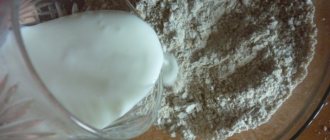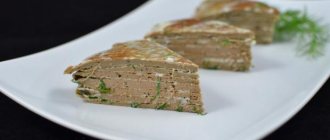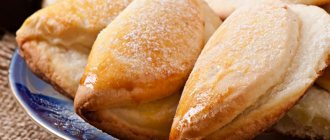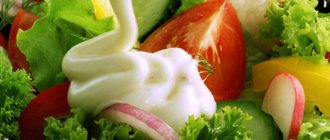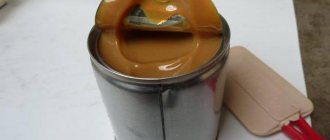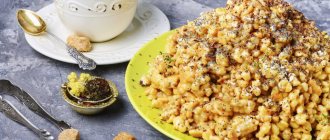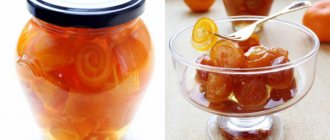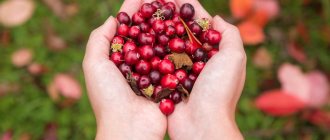Composition of sour cream
A high-quality fermented milk product, made from a special starter and cream, should be fatty, moderately thick and not very sour. This sour cream contains saturated, poly- and monounsaturated fatty acids, as well as mono- and disaccharides.
| Vitamins | Content | Minerals | Content |
| A | 90.0 mcg | Calcium | 141.0 mg |
| D | 0.2 mcg | Zinc | 0.5 mg |
| D3 | 0.2 mcg | Iron | 0.1 mg |
| B2 | 0.1 mg | Sodium | 83.0 mg |
| B3 | 0.1 mg | Magnesium | 10.0 mg |
| E | 0.3 mg | Selenium | 3.1 mg |
| B4 | 19.2 mg | Phosphorus | 71.0 mg |
| K | 0.5 mcg | Potassium | 212.0 mg |
| Beta carotene | 21.0 mcg | ||
| C | 0.9 mg | ||
| B9 | 11.0 mcg | ||
| B12 | 0.4 mg |
The energy value of sour cream depends on its fat content. A good product is characterized by a uniform white color with a slight creamy tint without any external irregularities or lumps, it has an enveloping property.
Calorie content of sour cream: nutritional value of the product
The calorie content of sour cream is quite high, but this does not prevent the widespread use of this type of dairy product in cooking, dietetics and cosmetology.
The nutritional value and calorie content of sour cream per 100 g, depending on the fat content, are determined by the following composition of the product:
- Retinol (vitamin A) – 0.1 mg;
- Nicotinic acid (vitamin PP) – 0.1 mg;
- Beta-carotene – 0.04 mg;
- Thiamine (vitamin B1) – 0.03 mg;
- Riboflavin (vitamin B2) – 0.1 mg;
- Pyridoxine (vitamin B6) – 0.07 mg;
- Folic acid (vitamin B9) – 8.5 mcg;
- Cyanocobalamin (vitamin B12) – 0.4 mcg;
- Ascorbic acid (vitamin C) – 0.4 mg;
- Vitamin D – 0.2 mcg;
- Tocopherol (vitamin E) – 0.3 mg;
- Biotin (vitamin H) – 3.6 mcg;
- Choline – 124 mg;
- Potassium – 116 mg;
- Iron – 0.2 mg;
- Calcium – 88 mg;
- Sodium – 40 mg;
- Chlorine – 61 mg;
- Magnesium – 9 mg;
- Phosphorus – 61 mg;
- Zinc – 0.24 mg;
- Iodine – 7 mcg;
- Copper – 20 mcg;
- Manganese – 0.003 mg;
- Selenium – 0.3 mcg;
- Fluoride – 14 mcg;
- Molybdenum – 5 mcg;
- Cobalt – 0.3 mcg;
- Calorie content of sour cream 10% – 115 kcal;
- Proteins – 3 g;
- Fats – 10 g;
- Carbohydrates – 2.9 g;
- Calorie content of sour cream 15% – 160.5 kcal;
- Proteins – 2.9 g;
- Fats – 15 g;
- Carbohydrates – 3.1 g;
- Calorie content of sour cream 20% – 206 kcal;
- Proteins – 2.8 g;
- Fats – 20 g;
- Carbohydrates – 3.2 g;
- Calorie content of sour cream 25% – 248 kcal;
- Proteins – 2.6 g;
- Fats – 25 g;
- Carbohydrates – 3.3 g;
- Calorie content of sour cream 30% – 294 kcal;
- Proteins – 2.4 g;
- Fats – 30 g;
- Carbohydrates – 3.1 g.
Calorie content and nutritional value Sour cream 20.0% fat
| Property | Meaning |
| Calorie content, kcal | 206 |
| Proteins, g | 2,5 |
| Carbohydrates, g | 3,4 |
| Fats, gr | 20 |
Sour cream, whose calorie content is associated with an impressive amount of milk fat, has extremely high nutritional value. 100 g of product contains 2% of the daily requirement of carbohydrates, 13% fat, 5% protein.
| Fat content of sour cream per 100 g of product | Proteins, g | Fats, g | Carbohydrates, g |
| 10% 1 tsp/tbsp. l. | 3,0 0,21/0,6 | 10,0 0,7/2 | 2,9 0,2/0,58 |
| 15% 1 tsp/tbsp. l. | 2,6 0,18/0,52 | 15,0 1,05/3 | 3,0 0,21/0,6 |
| 20% 1 tsp/tbsp. l. | 2,8 0,2/0,56 | 20,0 1,4/4 | 3,2 0,22/0,64 |
| 25% 1 tsp/tbsp. l. | 2,6 0,18/0,52 | 25,0 1,75/5 | 2,5 0,18/0,5 |
| 30% 1 tsp/tbsp. l. | 2,4 7/0,48 | 30,0 0,17/6 | 3,1 0,22/0,62 |
The product, made from whole milk, fresh cream and natural starter, is recommended for consumption even by people who cannot tolerate cow's milk protein.
The energy and nutritional value of homemade sour cream is determined by the product-specific indicators shown in the table, taking into account the daily consumption rate.
| Name | Content | % of daily value |
| Squirrels | 2.78 g | 4% |
| Fats | 26.79 g | 36% |
| Carbohydrates | 3.48 g | 1% |
| Calorie content, kcal | 268.40 kcal | 13% |
The information provided is an average and may vary depending on the origin of the product.
| Name of the dish | Calorie content, kcal/100 g |
| Cucumber salad | 35,53 |
| With tomatoes | 91,88 |
| With radish | 95,75 |
| With beets | 99,23 |
| Borsch with sour cream | 21,38 |
| Chicken liver in sour cream | 137,18 |
| Rabbit in sour cream | 204,01 |
| Sour cream pie | 173,92 |
| Cottage cheese casserole | 173,92 |
| Sour cream pie | 238,71 |
| Sour cream cheesecake | 193,9 |
The high calorie content of such a component requires not only careful attention to the composition of the ingredients, but also compliance with the portion size when consuming the dish.
Sour cream (the calorie content of liquid dishes is practically independent of the inclusion of a fermented milk product in the recipe) is an indispensable dressing for many liquid dishes, participating in the creation of a variety of flavor bouquets.
Borsch with sour cream
Calorie content: 21.38 kcal/100 g. Recommended serving: 250 g.
Required ingredients:
- sunflower oil - 30 ml;
- potatoes - 3 pcs.;
- carrots - 1 pc.;
- table beets - 1 pc.;
- onion - 1 pc.;
- fresh cabbage - 150 g;
- tomato paste - 20 g;
- salt, dried dill - 2 tsp each;
- drinking water - 2.5 l;
- sour cream - 50 g.
Creating a dish:
- Peel and rinse the vegetables. Cut the potatoes into medium-sized wedges. Finely chop the onion. Coarsely grate the carrots and beets. Chop the cabbage into small strips.
- Pour 2.5 liters of filtered water into a saucepan and put on fire. When the liquid boils, place all the prepared vegetables into the container.
- Reduce heat after boiling again, cook food for 15 minutes. over low heat.
- Combine tomato paste, dried dill, oil and salt in a bowl. Place the dressing in a saucepan, bring the mixture to a boil, and finish cooking.
Let the diet borscht steep for a short time, then serve with sour cream.
The energy value of such food depends on the ingredients included in the recipe. Instead of premium flour, you can use starch, add sour cream in a less fatty version.
Calorie content: 137.18 kcal/100 g. Recommended serving: 250 g.
Components used:
- vegetable or olive oil - 30 ml;
- onion - 1 pc.;
- chicken liver - 500 g;
- sour cream 25% fat - 100 g;
- broccoli - 300 g;
- flour - 30 g;
- drinking water - 200 ml;
- pepper, salt - optional.
Cooking technique:
- Thoroughly clean each piece of liver from possible films and gall bladders. Rinse under running water and blot with napkins.
- Heat a frying pan, quickly, literally 1.5 minutes at a time, fry the offal in oil on both sides.
- As soon as the liver acquires a light color, place the onion chopped into half rings. Stir the ingredients and continue cooking for another 5 minutes.
- Add sauce made from drinking water, flour and sour cream to the container.
- Add pre-cooked broccoli. Season the mixture with pepper and salt, mix well. Bring the mixture to a boil, turn off the heat.
Serve the dish hot.
Rabbit in sour cream
Calorie content: 204.01 kcal/100 g. Recommended serving: 150 g.
Product composition:
- butter - 50 g;
- onion - 1 pc.;
- rabbit - 500 g;
- premium flour - 60 g;
- table vinegar - 1 tsp;
- sprig of rosemary;
- sour cream (20% fat) - 150 g;
- laurel leaf - 1 pc.;
- juice of ½ lemon;
- pepper, salt - to taste.
Cooking order:
- Free the meat from the films, place in a basin, add vinegar, lemon juice, and a sprig of rosemary. Soak the rabbit in the marinade for 2–3 hours.
- Divide the carcass into portions, season with salt and pepper. Dip the meat in flour, fry in hot oil until golden brown.
- In a separate container, sauté chopped onion until soft and add it to the meat.
- Add 1 tbsp to the products. boiled drinking water. Mix everything, simmer for 10 minutes. over low heat, covered.
Serve the dish with new potatoes and herbs.
Sour cream: calories
What are the benefits of sour cream? Traditionally, it is considered a Slavic product. In Europe they learned about it thanks to the Russians, and for a long time they called it “Russian cream”. It is interesting that even today not all countries produce sour cream, and if they do, it is in limited quantities. Although this is quite strange, because sour cream is a valuable product in terms of nutritional and taste properties.
It is difficult to imagine the life of a Slavic person without sour cream. It’s hard to imagine that there isn’t a bowl of sour cream on the table. Each of us adds sour cream to at least one dish. It can be both hot and cold first courses; it can also be found in sauces. It is served with dumplings, dumplings, cheesecakes, pancakes, and casseroles. Used as the main ingredient in baking cakes and pies, added in the production of creams. There is no need to say much that children adore cottage cheese with sour cream, and this dish, in addition to its pleasant taste, also has great benefits. Many adults limit themselves and refuse such a dessert or breakfast, believing that the calorie content of cottage cheese with sour cream is quite high.
If you go into great detail in calculating how many calories are in sour cream, then its fat content varies, and so does its calorie content. It can vary from 115 (10% fat) to 384 (40% fat) calories per 100 g of product.
Just like in the old days, today many residents of towns and villages continue to collect sour cream the old fashioned way. Let the milk settle and then remove the top layer. Large sour cream producers choose a different method of preparing the product. They add pure lactic bacteria to pasteurized cream.
Sour cream of varying fat content is available on store shelves. Today you can find sour cream from 10% to 40% fat. If 40% sour cream, its calorie content will be 384 calories per 100 grams: this is a high-calorie product and it is contraindicated for obesity, osteosclerosis, diabetes, and cardiovascular diseases. Abuse of a product such as sour cream, which is quite high in calories, can adversely affect health.
It should be noted that this product contains many vitamins and microelements, in particular vitamins A, B, C, D, PP, microelements - biotin, potassium, calcium, magnesium, phosphorus, sodium, etc. In addition to vitamins and microelements, sour cream contains carbohydrates, complete animal protein, acids, and sugars.
Sour cream, whose calorie content is minimal (10-15% fat), is easily absorbed by the body. It can be safely given to young children, the elderly, and people undergoing rehabilitation after an illness. Scientists have proven that sour cream improves memory and helps delay the onset of menopause. For this reason, it is recommended that women over 35 years of age include sour cream in their diet.
When buying sour cream, please note that it should have a characteristic sour milk smell, taste, and color. The consistency should be uniform. Sour cream, which has less calories (10% fat), should be used less frequently than higher-calorie and fatty sour cream. Be sure to study the composition and shelf life. The composition should not contain anything other than cream and starter cultures, and the minimum shelf life should also be indicated.
Sour cream has long been used in folk medicine to treat many diseases. The beneficial properties of the product are also appreciated by modern nutritionists. Connoisseurs of aesthetic beauty also believe that sour cream is an indispensable product, especially in the preparation of homemade creams, masks, and balms. Sour cream perfectly whitens, refreshes the skin, tightens pores, smooths out wrinkles.
As you have already seen, sour cream is a miraculous, amazing product. It is recognized not only by food lovers, but also by doctors and traditional healers. This is a truly excellent product that not only has amazing taste, but also benefits our body.
What is fat percentage?
The percentage of fat content of sour cream is an indicator of the mass fraction of fat in the composition of the product.
Depending on the amount of this component, sour cream is divided into types:
- classical - from 20 to 34%;
- low-fat - 15–17.19%;
- low-fat - from 10 to 14%;
- oily - 35–48%;
- high fat – 50–58%.
Calorie content of sour cream
Despite the high level of organic substances, this product is dietary, occupying an important place in human nutrition. Sour cream has been widely used for culinary, cosmetic and medicinal purposes since ancient times. The energy value of the fermented milk product is reflected in the table, including per tablespoon or teaspoon.
| Fat content of sour cream | Calorie content, kcal/100 g | in 1 tsp, kcal | in 1 tbsp. l., kcal |
| 10% | 115 | 8,05 | 23 |
| 15% | 158 | 11,06 | 31,6 |
| 20% | 206 | 14,42 | 41,2 |
| 25% | 248 | 17,36 | 49,6 |
| 30% | 294 | 20,58 | 58,8 |
Composition and beneficial properties of the product
Since ancient times in Rus', sour cream has been known for its exceptional properties. It was widely used as an independent dish, sauces were prepared on its basis, added to baked goods, etc. In addition, it was used for medicinal and cosmetic purposes.
High quality sour cream is made from selected pasteurized cream and bacterial leaven. A high-quality product is completely homogeneous in consistency, without grains or separations. At the same time, low-fat sour cream should not be thick, and the thicker the product, the higher the percentage of fat content.
Sour cream contains a whole pantry of vitamins necessary for the body: A, PP, D, E, B1, B5, B2, B6, B12, B9, H, C. Minerals in it are represented by common calcium, sodium, magnesium, potassium, chlorine, phosphorus, zinc, iron, iodine. In addition to them, sour cream contains quite rare minerals - selenium, copper, fluorine, manganese, molybdenum and cobalt. It also contains large quantities of proteins, fats and carbohydrates, saccharides, water, unsaturated and organic acids, cholesterol and ash.
Just a few spoons of this product will fill the body with the necessary substances so that it remains in good shape all day. And if you use sour cream regularly, then improvements in health and general well-being will not take long to arrive. In particular, in humans:
- the color and structure of the skin is evened out, a healthy glow appears;
- the nervous system is strengthened and memory improves;
- metabolism increases and intestinal function improves;
- thanks to the high calcium content, bones and teeth are strengthened;
- improves the appearance and health of hair and nails;
- Reproductive function increases.
Some people avoid this product because of the cholesterol it contains. However, even the fattest and most high-calorie sour cream contains less cholesterol than butter. Therefore, in a proper nutrition system it is often recommended to replace butter with sour cream.
Product calculator
Enter the amount of the product “Sour cream 20% fat” to calculate its nutritional value
| Property | Meaning | % of normal | |
| Calorie content, kcal | 206 | 10.3 | 10.3% |
| Proteins, g | 2,5 | 1.33 | 1.33% |
| Carbohydrates, g | 3,4 | 1.2 | 1.2% |
| Fats, gr | 20 | 45.45 | 45.45% |
Enter the amount of the product “Sour cream 20.0% fat” to calculate its nutritional value
Nutritional value and chemical composition of sour cream
In many ways, the composition of sour cream duplicates the composition of milk: the same variety of vitamins and minerals that are vital for humans, helping to preserve the youth of the body, helping to strengthen bones and supporting the immune system. In addition, the benefits of animal protein, natural sugar and organic acids have also not been canceled.
| Substance content in sour cream | Per 100 grams | % of daily value |
| Squirrels | 2.6 g | 3,4 % |
| Fats | 15 g | 25% |
| Carbohydrates | 3.6 g | 1,7% |
| Vitamin A | 107 mcg | 11,9% |
| Vitamin B2 | 0.1 mg | 5,6% |
| Vitamin B5 | 0.3 mg | 6% |
| Vitamin PP | 0.6 mg | 3% |
| Phosphorus | 61 mg | 7,6% |
| Magnesium | 9 mg | 2,3% |
| Potassium | 116 mg | 4,6% |
| Calcium | 88 mg | 8,8% |
| Iron | 0.2 mg | 1,1% |
Nutritionists say that sour cream is one of the best natural antidepressants, so if during your diet you feel sad without chocolates and cakes, quickly season your favorite fruit salad with low-fat sour cream, and life will again acquire a pleasant, delicate flavor! How do you use sour cream? Share your favorite dishes with her in the comments!
Micro- and macroelements in Sour cream 20% fat
Sour cream 20% fat contains the following elements: Mono- and disaccharides, SFA - Saturated fatty acids, Cholesterol, Ash, Water, Organic acids, Sodium, Potassium, Phosphorus, Magnesium, Calcium, Sulfur, Copper, Iodine, Manganese, Fluorine, Molybdenum, Cobalt, Selenium, Zinc, Iron, Chlorine.
| Micro and macro element | Meaning |
| Mono- and disaccharides, g. | 3,4 |
| SFA – Saturated fatty acids, g. | 11,9 |
| Cholesterol, mg | 87 |
| Zola, Mr. | 0,5 |
| Water, city | 72,8 |
| Organic acids, g. | 0,8 |
| Sodium, mg | 35 |
| Potassium, mg | 109 |
| Phosphorus, mg | 60 |
| Magnesium, mg | 8 |
| Calcium, mg | 86 |
| Sulfur, mg | 25 |
| Copper, µg | 20 |
| Iodine, mcg | 7 |
| Manganese, mg | 0,003 |
| Fluorine, mcg | 14 |
| Molybdenum, mcg | 5 |
| Cobalt, µg | 0,3 |
| Selenium, mcg | 0,3 |
| Zinc, mg | 0,24 |
| Iron, mg | 0,2 |
| Chlorine, mg | 61 |
Sour cream 20.0% fat contains the following elements: Mono- and disaccharides, SFA - Saturated fatty acids, Cholesterol, Ash, Water, Organic acids, Sodium, Potassium, Phosphorus, Magnesium, Calcium, Sulfur, Copper, Iodine, Manganese, Fluorine, Molybdenum, Cobalt, Selenium, Zinc, Iron, Chlorine.
Composition and calorie content of sour cream of different fat contents
Lactic acid bacteria, which are part of sour cream, have a beneficial effect on the functioning of the intestines, populate it with beneficial microflora and ensure regular bowel movements. The calorie content of sour cream with 10% fat content is 119 kcal, 20% - 206 kcal, 15% - 162 kcal, 30% - 290 kcal per 100 g.
The energy value of cottage cheese with sour cream per 100 g is 165.4 kcal. 1 tablespoon of sour cream 20% fat content is approximately 20 g, which is 41.2 kcal. A teaspoon contains approximately 9 g, therefore 18.5 kcal.
Nutritional value of natural sour cream of different fat contents in table form:
| Fat content | Carbohydrates | Squirrels | Fats | Water | Organic acids |
| 10 % | 3.9 g | 2.7 g | 10 g | 82 g | 0.8 g |
| 15 % | 3.6 g | 2.6 g | 15 g | 77.5 g | 0.8 g |
| 20 % | 3.4 g | 2.5 g | 20 g | 72.8 g | 0.8 g |
BJU ratio:
- 10% sour cream – 1/3.7/1.4;
- 15% – 1/5,8/1,4;
- 20% – 1/8/1.4 per 100 grams, respectively.
Chemical composition of natural sour cream 10%, 15%, 20% fat per 100 g:
| Name of substance | Sour cream 10% | Sour cream 15% | Sour cream 20% |
| Iron, mg | 0,1 | 0,2 | 0,2 |
| Manganese, mg | 0,003 | 0,003 | 0,003 |
| Aluminum, µg | 50 | 50 | 50 |
| Selenium, mcg | 0,4 | 0,4 | 0,4 |
| Fluorine, mcg | 17 | 17 | 17 |
| Iodine, mcg | 9 | 9 | 9 |
| Potassium, mg | 124 | 116 | 109 |
| Chlorine, mg | 76 | 76 | 72 |
| Calcium, mg | 90 | 88 | 86 |
| Sodium, mg | 50 | 40 | 35 |
| Phosphorus, mg | 62 | 61 | 60 |
| Magnesium, mg | 10 | 9 | 8 |
| Vitamin A, mcg | 65 | 107 | 160 |
| Vitamin PP, mg | 0,8 | 0,6 | 0,6 |
| Choline, mg | 47,6 | 47,6 | 47,6 |
| Ascorbic acid, mg | 0,5 | 0,4 | 0,3 |
| Vitamin E, mg | 0,3 | 0,3 | 0,4 |
| Vitamin K, mcg | 0,5 | 0,7 | 1,5 |
| Vitamin D, mcg | 0,08 | 0,07 | 0,1 |
20% sour cream contains 87 mg of cholesterol, 10% - 30 mg, 15% - 64 mg per 100 g. In addition, fermented milk products contain mono- and polyunsaturated fatty acids, such as omega-3 and omega-6 , as well as disaccharides.
© Pavel Mastepanov — stock.adobe.com
Consumption rates for sour cream of different fat contents
This indicator is individual for each person and consists of many factors:
- balanced diet;
- energy consumption of the body;
- body weight;
- gender;
- person's age.
The daily intake of sour cream recommended by the Institute of Nutrition of the Russian Academy of Medical Sciences is 20 g of the biologically based 6.5 kg per year. This is an approximate indicator that depends not only on certain conditions, but also on the fat content of the product consumed.
If there are signs of obesity or elevated cholesterol levels, the norm should be reduced to 2 tbsp. l. low-fat (up to 14%) or low-fat (up to 34%) sour cream per day. Fatty (up to 48%) and high-fat (from 50%) products are recommended for consumption in amounts up to 1 tbsp. l. depending on the person's health status.
How many kcal are in sour cream
There are a wide variety of types of sweet pastries, differing in cooking methods and ingredients. At the same time, one of the easiest to prepare is sour cream. Along with the ease of preparation, it has an excellent taste, is prepared from affordable ingredients, and therefore is very popular.
Sour cream first appeared on the menu a long time ago. Then poor housewives prepared dough with the addition of this product, baked it and coated it with sour cream. Sometimes honey was also added to it. Later, based on this ancient recipe, a classic cake appeared. It is based on a biscuit, an important component of which is this fermented milk product. The cream is also prepared on the basis of sour cream. Additionally, cocoa, various dried fruits, and nuts can be added to the baked goods, depending on preferences.
Benefits and harms
Thanks to its unique composition, especially when adding dried fruits and nuts, such baked goods contain a large amount of useful substances. However, if sweetness is abused, it can cause much more harm. The main consequences may be caries, deterioration of the stomach, and obesity. It is especially not recommended to eat cake for people who are overweight and have certain diseases, such as diabetes.
Calorie content and BZHU
Even if you have to go on a diet, you still want to treat yourself to something tasty. You just need to choose the right dessert, we’ll find out whether the Smetannik cake is suitable for those who take care of their figure. To do this, you need to find out how many calories the Smetannik cake contains . When preparing, butter, flour and sugar are used, so its energy value is especially high and the dish cannot generally be called dietary.
It is better not to use sour cream for those who are losing weight. So, one piece weighing approximately 130-140 grams will contain about 430 calories.
Per 100 grams of product there are: Calories: 318 Kcal Proteins: 4.96 g Fats: 14.17 g Carbohydrates: 42.30 g
Vitamins in Sour cream 20.0% fat
Sour cream 20% fat contains the following vitamins: Mono- and disaccharides, SFA - Saturated fatty acids, Cholesterol, Ash, Water, Organic acids, Sodium, Potassium, Phosphorus, Magnesium, Calcium, Sulfur, Copper, Iodine, Manganese, Fluorine, Molybdenum, Cobalt, Selenium, Zinc, Iron, Chlorine.
| Vitamin | Meaning |
| Vitamin B1 (thiamine), mg | 0,03 |
| Vitamin B2 (riboflavin), mg | 0,11 |
| Vitamin B6 (pyridoxine), mg | 0,07 |
| Vitamin B9 (folic), mcg | 8,5 |
| Vitamin C, mg | 0,3 |
| Vitamin E (TE), mg | 0,4 |
| Vitamin PP (Niacin equivalent), mg | 0,6 |
| Vitamin B12 (cobalamins), mcg | 0,4 |
| Vitamin D, mcg | 0,1 |
| Vitamin A, mg | 0,15 |
| Choline, mg | 124 |
| Vitamin A (VE), mcg | 160 |
| Beta-carotene, mg | 0,06 |
| Vitamin H (biotin), mcg | 3,6 |
| Product | Kcal | Proteins, g | Fats, g | Angle, g |
| Sour cream (low fat) | 181 | 7 | 14,1 | 7 |
| Light Sour Cream | 136 | 3,5 | 10,6 | 7,1 |
| Sour cream (Low fat) | 74 | 3,1 | 0 | 15,6 |
| Sour cream | 214 | 3,16 | 20,96 | 4,27 |
| Sour cream 10% fat | 119 | 2,7 | 10 | 4,5 |
| Sour cream 15% fat | 162 | 2,6 | 15 | 3,6 |
| Sour cream 20% fat | 206 | 2,5 | 20 | 3,4 |
| Sour cream 25% fat | 250 | 2,4 | 25 | 3,2 |
| Sour cream 30% fat | 293 | 2,3 | 30 | 3,1 |
| Fermented sour cream | 193 | 2,07 | 19,73 | 2,88 |
| Fermented sour cream, substitute | 208 | 2,4 | 19,52 | 6,63 |
| Fermented sour cream, low fat | 135 | 2,94 | 12 | 4,26 |
| Fermented sour cream dressing in the form of cream, without milk fat | 178 | 3,25 | 16,57 | 4,68 |
| Sour cream, light | 138 | 3,5 | 10,6 | 7,1 |
| Sour cream “Homemade” 10.0% fat | 130 | 3,8 | 10 | 5,6 |
| Sour cream 10.0% fat | 119 | 2,7 | 10 | 3,9 |
| Sour cream 15.0% fat | 162 | 2,6 | 15 | 3,6 |
| Sour cream 20.0% fat | 206 | 2,5 | 20 | 3,4 |
| Sour cream 25.0% fat | 250 | 2,4 | 25 | 3,2 |
| Sour cream 30.0% fat | 293 | 2,3 | 30 | 3,1 |
| Sour cream, 36% fat | 346 | 2,4 | 36 | 2,6 |
| Sour cream, 40% fat | 381 | 2,4 | 40 | 2,6 |
Sour cream 20.0% fat contains the following vitamins: Mono- and disaccharides, SFA - Saturated fatty acids, Cholesterol, Ash, Water, Organic acids, Sodium, Potassium, Phosphorus, Magnesium, Calcium, Sulfur, Copper, Iodine, Manganese, Fluorine, Molybdenum, Cobalt, Selenium, Zinc, Iron, Chlorine.
| Vitamin | Meaning |
| Vitamin B1 (thiamine), mg | 0,03 |
| Vitamin B2 (riboflavin), mg | 0,11 |
| Vitamin B6 (pyridoxine), mg | 0,07 |
| Vitamin B9 (folic), mcg | 8,5 |
| Vitamin C, mg | 0,3 |
| Vitamin E (TE), mg | 0,4 |
| Vitamin PP (Niacin equivalent), mg | 0,6 |
| Vitamin B12 (cobalamins), mcg | 0,37 |
| Vitamin D, mcg | 0,1 |
| Vitamin A, mg | 0,15 |
| Choline, mg | 124 |
| Vitamin A (VE), mcg | 160 |
| Beta-carotene, mg | 0,06 |
| Vitamin B5 (pantothenic), mg | 0,3 |
| Vitamin PP, mg | 0,1 |
| Vitamin H (biotin), mcg | 3,6 |
Calorie content of sour cream
The calorie content of sour cream is determined by the fat content of this fermented milk product . As you remember, the calorie content of sour cream with 15% fat per 100 grams is on average 165 calories, while the calorie content of sour cream with 20% fat is slightly higher.
We also provide data on the number of calories for other forms of sour cream (per 100 grams):
- 10% sour cream – 115 kcal;
- 12% sour cream – 134 kcal;
- 25% sour cream – 246 kcal;
- 30% sour cream – 295 kcal.
Beneficial properties for the female and male body
Sour cream (calorie content depends on its fat content) is one of the safe and valuable dairy products for the body, such as butter and cream. This is explained by the presence of milk fat in the food, as well as the absence of casein, a strong oxidizing agent.
The beneficial properties of sour cream for the female body include the following factors:
- The content of vitamin B (choline) makes the food indispensable in the diet of expectant mothers. The biologically active substance is manifested in the proper development of the fetal brain;
- prevents early menopause;
- normalizes hormonal levels;
- slows down aging;
- nourishes the skin when included in masks;
- sharpens memory;
- strengthens nails;
- helps hair growth.
The beneficial properties of sour cream have also been noted for the male body:
- milk proteins participate in the formation of muscles, tone muscles, and maintain the figure in good condition;
- consumption of sour cream, which is recognized as a strong aphrodisiac, increases sexual desire and sexual activity;
- using the product supports a man's hormonal levels.
Sour cream is a unique food that contains such important substances for the human body as lacto- and bifidobacteria. It is these elements with living bacteria that are necessary for the normal functioning of digestion and the functioning of the gastrointestinal tract.
Nutritional value of the product
| Fat content of sour cream | Squirrels, gr. | Fats, gr. | Carbohydrates, gr. |
| 10% | 3 | 10 | 2,9 |
| 15% | 2,6 | 15 | 3 |
| 20% | 2,8 | 20 | 3,3 |
| 25% | 2,6 | 25 | 2,5 |
| home | 2,4 | 30 | 3,1 |
Vitamins and minerals contained in sour cream
| Vitamins and minerals | Amount, mg | Effect on the body |
| Vitamin A | 0.088 | 1. Helps improve reproductive function; 2. Helps normalize the production of female and male sex hormones; 3. Reduces the manifestation of premenstrual syndrome, etc. |
| Vitamin B2 | 0.12 | 1. Directly involved in the metabolism of carbohydrates, proteins and fats in the human body; 2. Helps strengthen the immune system and protective mechanisms; 3. Has a positive result in the treatment of epilepsy, increased anxiety, etc. |
| Vitamin B3 | 0.07 | 1. Taking part in the metabolism of fats, proteins, amino acids; 2. Takes part in maintaining normal vision;3. It has a positive effect on the condition of the skin, intestinal lining, oral cavity, etc. |
| Vitamin B6 | 0.02 | 1. Help prevent nerve and skin disorders; 2. Promotes the synthesis of nucleic acids, which in every possible way prevent aging; 3. Helps reduce nighttime muscle spasms, hand numbness, etc. |
| Vitamin B9 | 0.01 | 1. Affects the growth and formation of all tissues; 2. Improves the functioning of the immune system and also supports the cardiovascular system; 3. Positively affects the activity of the hematopoietic system, the healthy state of the liver and the digestive system in general, etc. |
| Vitamin B12 | 0.04 | 1. Positive effect on the development of nerve fibers and metabolism; 2. Prevention of anemia; 3. Promotes the flow of energy and maintains the nervous system in a healthy state; 4. Affects the improvement of concentration, memory, balance, etc. |
| Vitamin C | 0.9 | 1. Assistance in the functioning of the endocrine system; 2. Promotes excellent brain function and concentration; 3. Has a positive effect on the condition of bones, teeth, cartilage, etc.; 4. Favorable effect on the condition of the skin, etc. |
| Vitamin E | 0.3 | 1. Helps strengthen the immune system; 2. Help in coping with stress and depression; 3. Positively affects brain function; 4. Positively affects the condition of the skin, nails and hair, etc. |
| Potassium | 212 | 1. Promotes active brain function; 2. Positively affects various allergic conditions; 4. Regulates salts, alkalis, acids, etc. in the body. |
| Calcium | 140 | 1. Promotes proper functioning of the cardiovascular system; 2. Bone formation and mineralization of teeth; 3. Takes an active part in an important stage of the hemostasis system - blood coagulation, etc. |
| Sodium | 71 | 1. Helps maintain acid-base balance; 2. Participates in the formation of important functions of the nervous and muscular systems; 3. Participates in the normalization of water-salt metabolism, etc. |
| Phosphorus | 71 | 1. It determines how the body uses energy; 2. Has a positive effect on the growth and restoration of tissues and cells; 3. Needed for the use of other vitamins and minerals. |
You will find a lot of interesting information about sour cream in the following video:
Who are the calories in sour cream harmful to?
The beneficial properties of fermented milk product do not exclude the occurrence of negative consequences from consuming sour cream in the presence of a number of diseases:
- stomach ulcers or gastritis during exacerbation;
- problems with hypertension and liver;
- pathologies of the cardiovascular system;
- obesity;
- individual intolerance;
- allergies to lactose and milk.
The valuable components of sour cream for the body can manifest themselves only under one condition - the product must be made from natural ingredients and stored in appropriate containers at the proper temperature. The shelf life of high-quality dairy products is up to 5 days.
Contraindications
Sour cream is not recommended for people with bladder and liver diseases. You should also reduce your intake of this product if you have problems with blood pressure and the cardiovascular system. It is not recommended to use sour cream with other foods with high fat content, or for obese people.
The main contraindications of sour cream include individual intolerance, allergies, stomach ulcers, gastritis with high acidity, diabetes mellitus, atherosclerosis, hypertension, heart disease, etc.
Fresh vegetable salads with sour cream
Sour cream complements the taste of vegetable food well. A product with low fat content will slightly increase the calorie content of food. Experts recommend determining the approximate volume of a portion with your palm folded into a handful.
With tomatoes
Calorie content: 91.88 kcal/100 g. Recommended serving: 60 g.
Grocery list:
- Mozzarella cheese - 100 g;
- salt, dried oregano - to taste;
- ripe tomatoes - 200 g;
- lemon - ½ fruit;
- cucumber - 1 pc.;
- sour cream (25% fat) - 60 g;
- onion - ½ head;
- olives - 12 pcs.
Step-by-step preparation:
- Rinse the vegetables and pat dry with disposable towels. Chop the peeled onion into half rings.
- Cut tomatoes and cucumbers into small cubes.
- Divide the cheese into circles, olives into half rings.
- Combine the prepared ingredients in a bowl and lightly sprinkle with lemon juice.
- Season the food with salt and a pinch of dried oregano, and mix the salad.
Serve the dish to the table, season each serving with sour cream.
With cucumbers
Calorie content: 35.53 kcal/100 g. Recommended serving: 80 g.
Ingredients:
- sweet pepper - 100 g;
- dill - 20 g;
- fresh young cucumbers - 100 g;
- medium sour cream (20% fat) - 20 g;
- parsley - 20 g;
- salt and spices - to taste.
Cooking method:
- Rinse the cucumbers thoroughly, dry with napkins, and cut into strips.
- Remove the seeds and white membranes from the pepper, rinse under the tap, and pat dry with a paper towel. Chop the fruit into small slices.
- Combine vegetables in a serving plate, add chopped herbs, season with spices selected to taste.
Salt the salad and add fresh sour cream just before serving.
With beets
Calorie content: 99.23 kcal/100 g. Recommended serving: 70 g.
Set of components:
- apple - 1 pc.;
- balsamic vinegar - 1 tbsp. l.;
- carrots - 1 pc.;
- table beets - 1 pc.;
- peeled sunflower seed grains - 40 g;
- sour cream (fat content 15%) - 30 g;
- salt, pepper - to taste.
Step-by-step preparation:
- Heat a frying pan and fry the plant seeds without adding oil until lightly browned.
- Peel a hard apple (core), carrots and sweet beets. Grate the ingredients using a Korean grater and place in a salad bowl.
- Sprinkle the mixture with vinegar, pepper and salt, and add fresh sour cream.
Before eating, sprinkle the portions with roasted seeds to keep them fragrant and crunchy.
How many calories are in sour cream of different fat contents?
Here's how much:
The calorie content of sour cream 10% fat, per 100 grams, is:
Proteins, fats and carbohydrates (BJU) sour cream in gr. per 100 grams:
Proteins - 3.0
Fats – 10.0
Carbohydrates – 2.9
A:
The calorie content of sour cream 15% fat, per 100 grams, is:
Proteins, fats and carbohydrates (BJU) in gr. per 100 grams:
Proteins - 2.6
Fats – 15.0
Carbohydrates – 3.0
And here:
The calorie content of sour cream 20% fat, per 100 grams, is:
Proteins, fats and carbohydrates (BJU) in gr. per 100 grams:
Proteins - 2.8
Fats – 20.0
Carbohydrates – 3.2
Sour cream for weight loss:
And more on this topic:
By following a sour cream diet, you can improve the functioning of the digestive system, gastrointestinal tract, and also remove excess water from the body. Sour cream also improves the overall condition of the skin and strengthens all the bones in the body, enriches it with calcium and phosphorus.
The sour cream diet is a mono-diet. In this case, its excessive consumption is not desirable for the human body. The most optimal period for such a diet is a period of no more than two weeks. Although this diet can be repeated quite often. The main thing is to take long breaks from consuming this fermented milk product. Sometimes, during a diet, a person may feel some weakness and malaise. This is fine. After all, calorie consumption during this period is very small and therefore the body seems to be malnourished.
Like all diets, the sour cream diet has some contraindications. It is best to consult a specialist before starting this mono-diet. A nutritionist will help you choose the optimal amount of this product that a particular person needs. It is especially recommended to consult a doctor for those people who have chronic diseases or other disorders of the body.
The nutritional value
| Indicator name | Nutrient content per 100 grams of product |
| Calorie content, kcal | 206 |
| Proteins, g | 2.5 |
| Fats, g | 20 |
| Carbohydrates, g | 3.4 |
| Beta-carotene, mg | 0.06 |
| Vitamin A, mcg | 160 |
| Vitamin B1 (thiamine), mg | 0.03 |
| Vitamin B12 (cobalamins), mcg | 0.37 |
| Vitamin B2 (riboflavin), mg | 0.11 |
| Vitamin B5 (pantothenic), mg | 0.3 |
| Vitamin B6 (pyridoxine), mg | 0.07 |
| Vitamin B9 (folic), mcg | 8.5 |
| Vitamin C, mg | 0.3 |
| Vitamin D, mcg | 0.1 |
| Vitamin E (TE), mg | 0.4 |
| Vitamin H (biotin), mcg | 3.6 |
| Vitamin PP (niacin equivalent), mg | 0.6 |
| Iron, mg | 0.2 |
| Iodine, mcg | 7 |
| Potassium, mg | 109 |
| Calcium, mg | 86 |
| Cobalt, µg | 0.3 |
| Magnesium, mg | 8 |
| Manganese, mg | 0.003 |
| Copper, µg | 20 |
| Molybdenum, mcg | 5 |
| Sodium, mg | 35 |
| Selenium, mcg | 0.3 |
| Sulfur, mg | 25 |
| Phosphorus, mg | 60 |
| Fluorine, mcg | 14 |
| Chlorine, mg | 61 |
| Choline, mg | 124 |
| Zinc, mg | 0.24 |
Data on the nutritional value of the product are presented for informational purposes; the actual calorie content and nutritional value of the product may differ depending on the manufacturer and supplier (30% in one direction or the other). Please take this into account when planning your diet.
Sour cream is considered one of the most delicious and nutritious fermented milk products. It can be used to prepare a large number of dishes or added to hot dishes and baked goods. It is important to pay attention to the fat content, since many types are unacceptable during the diet.
